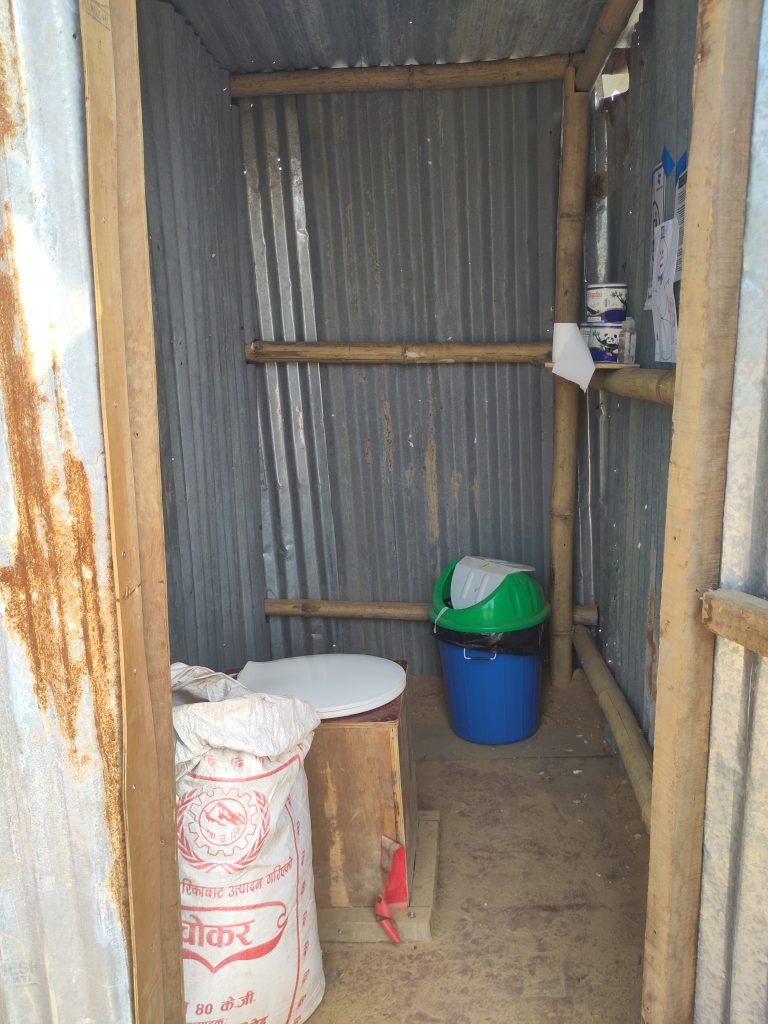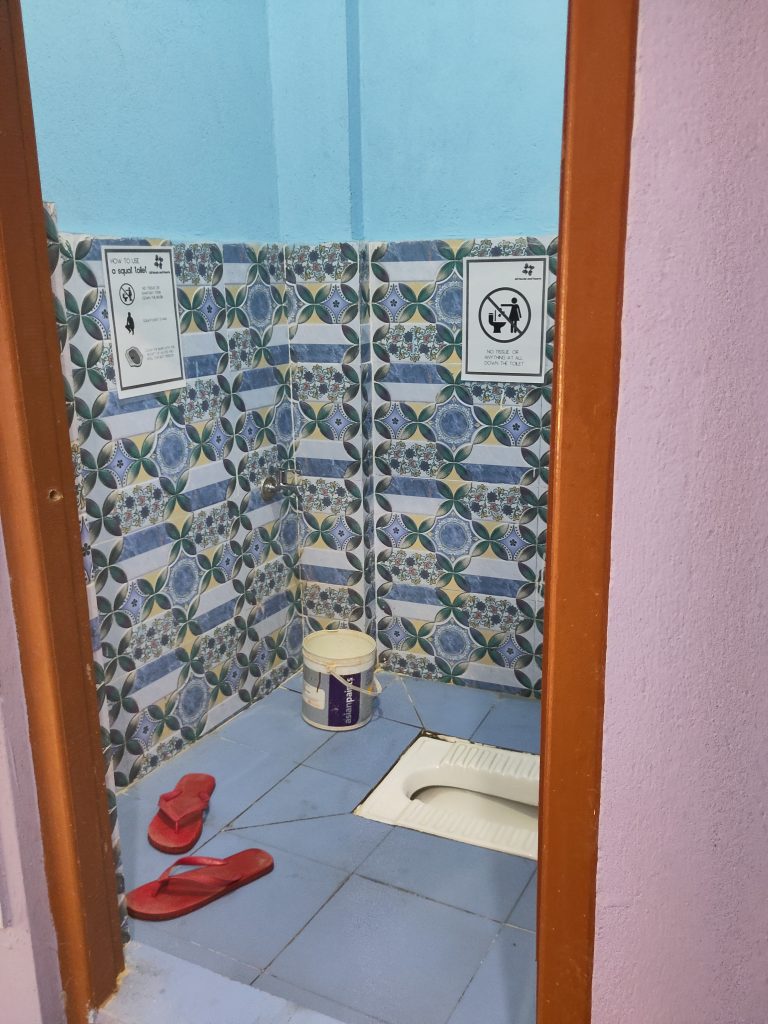Everyone loves it when I talk to them about toilets!! Ok, this might be a slight exaggeration, but it does actually surprise me that more people are interested than I would have thought. I guess it shouldn’t surprise me – toilets are a very necessary fact of life; they are somewhat taboo; they aren’t often talked about; when they take a form that you’re not used to they can range through delightful, interesting, amazing, baffling, awkward, uncomfortable, impossible, disgusting, and panic-inducing.
So here are some of my reflections on toilets.
Toilets are quite important! This bit really is obvious, we all need them and all use them every day. We all need them for the same reasons and yet despite serving exactly the same need, toilets vary quite a bit around the world.
Not only do humans need to do something with the waste we produce but we also need to do something that doesn’t make us sick. Developments in sanitation have had a massive impact on health outcomes and life expectancy. If contaminated water mixes with clean water then you run the risk of cholera etc. Not only that, but diarrhoea (one day I will learn to spell that word without having to look it up – today is not that day), is a big cause of illness (and in some cases death) of children. It also means children miss out on education. Without decent sanitation in schools, girls miss more school days than boys when they hit puberty. Without safe sanitation, girls and women suffer more gender-based violence. Toilets really do matter.
There are three main types of toilets that I’m experiencing here in Nepal.
The first is the plumbed indoor western-style toilet that many of you will be most familiar with. White porcelain, you sit on it, it has a toilet bowl with water, it has a flush. The main difference here is that toilet paper is provided but does not go down the toilet. So there is a bin next to the toilet for toilet paper (and other refuse). These can be found in hotels in Hetauda. They also have the water spray gun as well if that is your preference. This is similar to many other countries too. Mexico was the same.
The second is the dry toilet. This is a box with a toilet seat and lid (the lid is very important) that is at the same height as a standard western-style toilet. This is over a pit and so is quite long drop. I have no idea how deep it goes. I’m not particularly inclined to shine a torch down to see the depth (I’m committed to my toilet investigations, but not that committed). Again, toilet paper is provided and goes in the bin. There is a large bag of sawdust and after use one puts a scoop of sawdust down (this helps with the smell) and then closes the lid (very important for helping with the smell).

There are other dry toilets that I have used in other countries (in particular a very memorable indoor dry toilet in a summer house by a lake in Sweden where my friend’s dad took quite a lot of pleasure in explaining the mechanics to me. In that case, the toilet bowl separated liquids from solids and they went into different receptacles below. Separating liquids from solids helps with the smell and the two different containers (sort of large wheely bins) were sealed and removed (swapped with empty ones) as required. Anyway, the dry toilets we have on base are not this fancy, but they don’t need to be.
The third type is the standard plumbed squat toilet. This is also a porcelain contraption with water. There usually isn’t a flush as such, but there is a tap, bucket and jug so you can just sluice as much water down as required. These can be found in the building on base and in some restaurants in Hetauda. On base there is a bin for toilet paper (tissue), but in other places there isn’t. So one squats to use (more tips on this coming), uses water for cleaning oneself, uses water to clean and flush the toilet, uses paper / tissue to dry oneself, disposes of paper in the bin provided (if one is provided, otherwise one uses the tissues and nappy bag that one always has in one’s pocket/money belt and then disposes of this in the nearest actual bin, unless one doesn’t have this in which case one ensures cleanliness and worries less about dryness), uses water to clean and flush the toilet, washes one’s hands appropriately.

In some other places I’ve been to (Kazakhstan, I’m looking at you) there was a large pit with a temporary shed thing built over it, some floorboards were missing, so one was squatting over the gap in the floor, all waste (including sanitary pads, toilet paper – or newspaper in one case, etc) went through the hole in the floor and added to the piles in the (not very deep) pit – the flies were living their best lives. No water is involved here at all. Not only that but the shed was mixed gender and had waist high partitions between the holes, but no door in front (lesson learned – always use the furthest cubicle from the door). Did I mention that it was summer and about 30 degrees C? Memorable.
Squat technique varies and is something that I took some time to develop. It varies a little based on where I am and what I’m wearing and the condition of the room the toilet is in. In many cases I will roll my trousers up above my knees (in case of splashes – feet and calves are easier to clean than trousers – this is assuming wearing sandals / flip flops rather than hiking boots or trainers). It is important to ensure all pockets are zipped closed or are empty. Wallets in back pockets of trousers have the potential to follow the laws of gravity which may be disastrous (this has not happened to me yet and I’m hoping it never does). Ensure you have tissues / toilet paper / water at hand. Ensure you are not touching anything in your surroundings that you don’t want to be touching. Trousers are then lowered or skirts / saris are lifted etc – you get the picture. Stand with your feet more than hip width apart on either side of the bowl / hole in the floor / gap in the floor boards etc. I recommend having the left leg about 50cm further forward than the right. Keep the left foot flat on the floor, the left shin will be vertical. The right leg will bend and the heel will come off the floor. The right shin is horizontal. This is more stable than squatting with both feet in the same plane and on the balls of both feet. Remember, in most cases, there is nothing you want to hold onto / touch to keep stable. Of course you can take the four plastic bag approach where you put one plastic bag on each foot and on each hand. Just before you leave the room the bags are removed inside out and disposed of in another bag. When it comes to squat toilets on moving trains in India, all bets are off – just do the very, very best you can – wet wipes and hand gel and nappy bags are your friends. And Western-style toilets on trains between Johannesburg and Cape Town after the first 8 hours are much better avoided at all costs (I’m not actually recommending not eating or drinking, but it is an option that should not be discounted).
The reason for the left leg being forward is that the left hand is the hand used for cleaning. This is culturally important. It’s not really important from a hygiene point of view because you will clean your hands properly (alcohol hand gel is useful) and if one hand is not clean and you then bring both hands in contact with each other then both hands are now unclean. But the hand separation is exceedingly important in countries where you are eating curry with your hands. You’ll use your right hand for eating (because that is the culturally clean hand). So that is the hand that comes in contact with chilli. Please do not get the hands confused. Chilli is very hard to completely remove from your hands so if you have not cleaned your right hand well enough and you use that for cleaning yourself, you’ll know about it. You will probably only do this once and your eyes will stop watering eventually, I promise. (Left handed people probably swap this around and eat with their left hand so use their right as the cleaning hand, so may squat with the right leg forward.) Other people may have other suggestions, tips, techniques, etc. And you may develop your own with trial and error – hopefully not too much error!
In Thailand I came across a toilet that was very fancy, heated seat, various spray contraptions for cleaning etc. And I believe Japan absolutely leads the world in state of the art sanitation! And it has a toilet museum that I’ve seen a documentary about. I really must go there some day.
The moral of the story – sanitation is golden!! Toilets are your friends! If the locals can use them then so can you. But care, forethought, preparation and not being in a rush are helpful!
Leave a Reply to kath@kathmcguire.co.uk Cancel reply